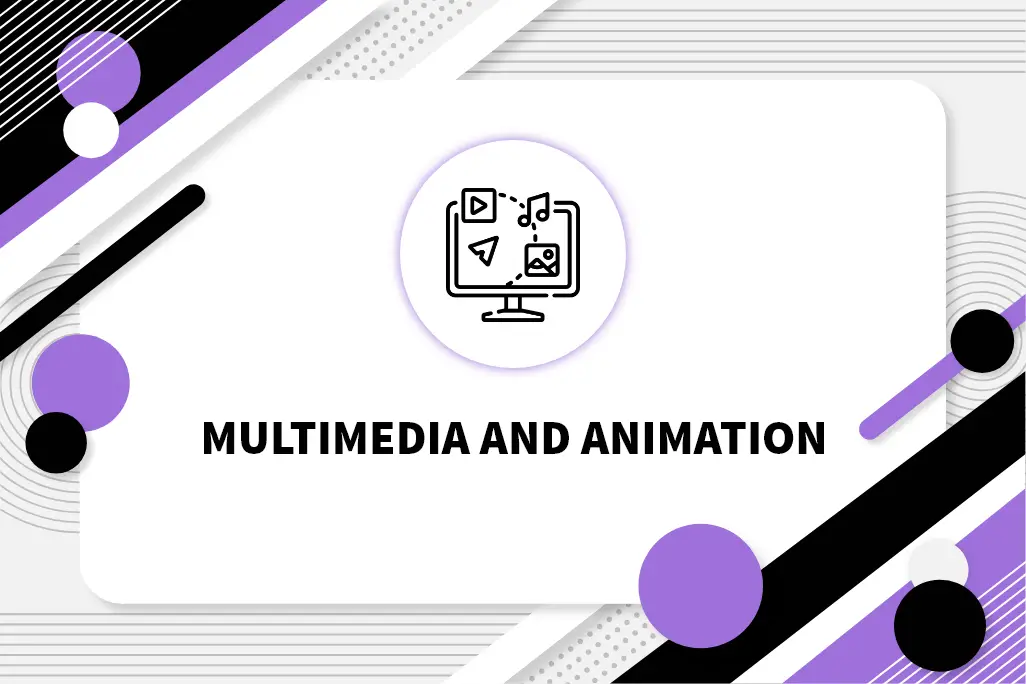JPEG DCT
JPEG-DCT को JPEG Compression के रूप में Refer किया जाता है| यह विशेष रूप से Image के लिए Design किया गया Lossy Compression Algorithm है। यह एक Image को Pixel के छोटे Block में Divide करके और Discrete Cosine Transform (DCT) के रूप में Mathematical Transformation की एक Series को Apply करके Compression Achieve करता है।
Discrete Cosine Transform (DCT)
DCT एक Image को Spatial Domain से Frequency Domain में Convert करता है। यह विभिन्न Frequency Component के Term में Image का Analyze करता है। यह Frequency Coefficient का एक Set है, जो प्रत्येक Image Block के भीतर विभिन्न Frequencies के Contribution को Represent करता है।
Encoding Process
JPEG-DCT Encoding Process में निम्नलिखित Step शामिल हैं-
- Color Space Conversion: Image को RGB Color Space से YCbCr Color Space में Convert करते है, जो Luminance (Y) और Chrominance (Cb और Cr) Information को अलग करता है।
- Divide the Image into Blocks: Image को आमतौर पर 8×8 Pixel वाले छोटे Square Block में Divide करें।
- Apply DCT: Frequency Coefficient का एक Set उत्पन्न करते हुए प्रत्येक Block पर DCT Apply करें।
- Quantization: Compression Achieve करने के लिए DCT Coefficient को Quantify करें, जो Process में अगला महत्वपूर्ण कदम है।
Quantization
JPEG-DCT Encoding में Quantization एक महत्वपूर्ण Process है, जो DCT Coefficient की Accuracy को कम करती है| जिससे आगे Compression करने की Permission मिलती है। यह एक Lossy Operation है, जो Irreversible Information Loss का Introduction देता है, जिससे कुछ Image Details को irretrievable रूप से Remove किया जा सकता है।
- Quantization Table
DCT Coefficient को Quantify करने के लिए एक Quantization Table का use किया जाता है। Table में Numerical Value होते हैं, जो प्रत्येक Frequency Component के लिए Quantization के Level को निर्धारित करते हैं। Higher Value के परिणामस्वरूप अधिक Aggresive Quantization होता है, जिससे High Compression Ratio होता है|
- Lossy Compression
Quantization के दौरान DCT Coefficient को संबंधित Quantization Table Values से Divide किया जाता है, और Nearest Integer तक Rounded किया जाता है। यह Rounding Process, High-Frequency Component को समाप्त कर देती है, जो Fine Detail के लिए Responsible होते हैं। Quantized Coefficient, Original DCT Coefficient की तुलना में कम सटीक Information Store करते हैं।
- Compression Ratios
Quantization Value का Choice Compression Ratio को प्रभावित करता है। High Quantization Value के परिणामस्वरूप Data में बड़ी कमी आती है| लेकिन साथ ही अधिक Visible Artifact भी Present होती हैं, जिससे Lower-Quality वाली Image बनती है। Compression और Image Quality के बीच सही Balance Find करना महत्वपूर्ण है।
JPEG Statistical Coding
JPEG Statistical Coding, Image Compression Process का एक अभिन्न अंग है| यह मुख्य रूप से एक Image को Represent करने के लिए आवश्यक Data की मात्रा को कम करने के लिए Responsible है। यह Efficient Compression प्राप्त करने के लिए Image Data के Statistical Properties का लाभ उठाता है। यहाँ JPEG Statistical Coding के मुख्य Component का Detail दिया गया है-
- Discrete Cosine Transform (DCT)
DCT Image Data को Spatial Domain से Frequency Domain में Convert करता है| तथा इसे Frequency Component के एक Set में Decompose करता है। DCT Visual Information की Concentration को कम Coefficient में सक्षम बनाता है, जिसके परिणामस्वरूप Compression में वृद्धि होती है।
- Quantization
DCT के बाद उनकी सटीकता को कम करने के लिए Frequency Coefficient पर Quantization Apply किया जाता है। यह Step Color और Brightness में छोटे बदलावों को समझने के लिए Human Visual System की Limited Capacity को कम करता है। Less Important Coefficient को हटाकर Acceptable Visual Quality को बनाए रखते हुए Quantization, Important Compression Ratio प्राप्त करता है।
- Huffman Coding
Huffman Coding एक Variable-Length वाली Entropy Encoding Technique है, जिसका use Quantized Coefficient को Compress करने के लिए किया जाता है। यह Statistical Approach, Coefficient Distribution के Statistical Properties को Expolite करके Compression Efficiency को Maximize करता है।
Predictive Lossless Coding
Statistical Coding के अलावा JPEG Compression Efficiency को और बढ़ाने के लिए Predictive Lossless Coding Techniques को Implement करता है। ये Techniques Image Data में Redundancy को कम करने के लिए Inter-Pixel Correlation और Predictive Model का Advantage Receive करती हैं। JPEG में Predictive Lossless Coding के प्रमुख Component में निम्नलिखित शामिल हैं-
- Differential Pulse Code Modulation (DPCM)
DPCM, Neighboring Pixel के आधार पर Pixel Value की Prediction करता है, और Predicted और Actual Value के बीच अंतर को Encode करता है। यह Approach Image Data के Efficient Representation के लिए अनुमति देते हुए Adjacent Pixel के बीच Spatial Correlation का Use करती है।
- Entropy Encoding
DPCM Step के बाद Prediction के अवशेषों को Huffman Coding या Arithmetic Coding जैसी Entropy Encoding Techniques का use करके Encode किया जाता है। Statistical Coding के समान Entropy Encoding आगे Compression प्राप्त करने के लिए Prediction Residual के Statistical Properties का Use करती है।
JPEG Performance
- High Compression Efficiency
JPEG Acceptable Visual Quality बनाए रखते हुए महत्वपूर्ण Compression Ratio प्राप्त करता है। JPEG द्वारा नियोजित Statistical Coding और Predictive Technique Image Data में Redundancies का Use करती हैं, जिससे Multimedia Content के Efficient Representation और Storage को Implement किया जा सकता है।
- Widespread Compatibility
JPEG विभिन्न Platforms, Software Application और Device में व्यापक रूप से Accepted Standard बन गया है। इसकी Compatibility Multimedia Workflow में Seamless Integration सुनिश्चित करती है, और Compressed Image के लिए आसान Sharing और Transmission की सुविधा Provide करती है।
- Scalability
JPEG विभिन्न Compression Level और Quality Setting का Support करता है, जिससे User अपनी Specific Requirement के अनुसार Compression Efficiency और Visual Fidelity को Balance कर सकते हैं। यह Scalability JPEG को Multimedia Application की एक Wide Range के लिए उपयुक्त बनाती है|
